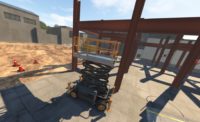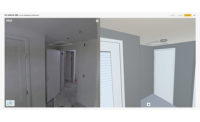Surveying long stretches of land for tunnels, pipelines and other subsurface infrastructure can be a time-consuming process when there is limited information on the local geology. Even with proper survey data, making sense of it for heavy civil work is a whole other challenge. But developing technologies offer new approaches to age-old problems.
“[We see it as] BIM for the subsurface,” explains Ronny Liverød, vice president of business development at EMerald Geomodelling. “Helicopter radar scanning is good for seeing what's there, but not good for boundaries,” he explains. Geologists can improve the model with onsite drill surveys, but that takes time. “We have developed a learning algorithm that combines geophysical measurement with geotechnical information, [along with the] ground truth to find where the bedrock actually is.”
The firm presented resuls of its technology during ENR FutureTech’s “Automating Infrastructure Site Development Planning” session earlier this month.
Locating bedrock in rocky environs like those found in Norway is traditionally the work of surveyors and geologists hiking the wilderness, but a tech startup spun off from a Norwegian government initiative is using recent advances in artificial intelligence to accurately map out subsurface conditions with remarkable accuracy.
EMerald Geomodelling starts with an aerial scanning survey using an instrument cluster carried by a helicopter. These electromagnetic sensors can provide a rough heat map of the different sediment types and rough approximations of where the bedrock is, but not precise enough for preconstruction. On-site geotechnical drilling can help refine the map, but this is time consuming. EMerald Geomodelling seeks to speed the process by letting an A.I. use its machine-learning to predict the subsurface geology of the site and reduce the amount of onsite survey points.
The EMerald Geomodelling system is able to provide subsurface bedrock mapping within 1m to 2m accuracy, across kilometers of surveyed land and to depths of up to 600 m. While drilling surveys are used to refine the model, it requires far fewer onsite surveys than in traditional methods. The technology has already been used on projects in Scandinavia and India and has even helped engineers catch design flaws in their projects.
Liverød says at least one project using his company's technology was able to determine that their planned tunnel lacked adequate bedrock cover in the original design. The 600 m of depth accuracy was also recently proven out on a job involving four tunnels underneath the Indian Himalayas.
Liverød added during his FutureTech presentation that EMerald Geomodelling has recently entered into a partnership with academic researchers to shrink their aerial survey instrument package so that it can be carried by a drone, greatly reducing the cost and complexity of their surveying method. The drone-based package is expected to be ready sometime in 2022.
Smarter Excavation Planning Speeds Civil Work
So you’ve collected the most accurate survey data of your infrastructure project, but what is a contractor supposed to do with it?
Maria Khokhlova, co-founder of construction tech firm TraceAir, says the best site data in the world can go to waste if contractors are relying on old excavation methods.
“What do we do with this data when the project starts to actually improve the productivity?” she asked FutureTech session attendees. “Construction teams [haven't] changed the way they interact with this data. When the data is not specifically tailored for their needs, it’s not practical.”
Khokhlova’s firm specializes in an A.I.-driven system to automatically calculate the optimal excavation and grading passes for civil work based on data from drone and equipment-mounted sensors. TraceAir’s algorithm is able to digest the vast amount of sensor data and produce usable information for specific tasks on site.
For example, TraceAir can provide site managers with an optimized design for a civil project’s haul roads, maximizing the use of equipment and minimizing downtime due to traffic jams and inefficient staging. “Traditionally it takes a very experienced person to design those roads, and still there is still a lot of guesstimation involved,” says Khokhlova.
Using TraceAir, the employee can go into a smartphone app and select the dump and load areas as well as the equipment being used, and the system will return an optimized haul road plan. The person "can get the mathematically most optimal route that can be passed to the drivers, as well as know the cycle times and the productivity to plan the workday accordingly,” she explains
In addition to automating excavation and grading activity planning, TraceAir can detect installation of construction elements and feed this progress information into the project management software for billing purposes.
Both Liverød’s and Khokhlova’s presentations, as well as input from a U.S-based civil contractor using TraceAir on real projects, can be viewed in the ENR FutureTech on-demand streaming platform, under the “Automating Infrastructure Site Development Planning” session.









Post a comment to this article
Report Abusive Comment